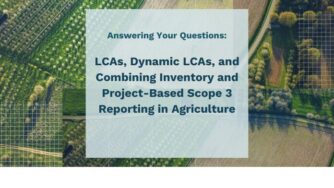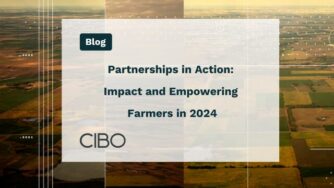Each December 5, there is a celebration for World Soil Day to honor the ground beneath our feet. According to the United Nations, 95% of our food comes from soils, while 33% are degraded. As a result, agricultural production will have to increase by 60% to meet the global food demand in 2050, and up to 58% more food could be produced through sustainable soil management.
Soils need a balanced and varied supply of nutrients in appropriate amounts to be healthy. With each harvest, agriculture systems lose nutrients unless they are sustainably farmed through regenerative agriculture practices. Soil nutrient loss is a major soil threat to overall yield, food production, and reducing the impact of climate change. Soil degradation is recognized as being among the most critical problems at a global level for food security and sustainability all around the globe.
Farmers represent the future of sustainable agriculture in the US. A growing number of food producers, companies, scientists, academics, conservation organizations, and government bodies are promoting, incentivizing, and trying new, sustainable farming practices. As a result, there is growing support for a shift to farming practices that make agriculture more productive and resilient while helping mitigate – possibly even reverse – climate change by drawing down CO2 from the atmosphere and reducing GHG emissions from farming practices.
That is where regenerative agriculture comes in. Farming is a complex operation, often requiring years and significant investments to realize the benefits of regenerative agriculture practice changes fully. Investments include the time to learn and incorporate new practices, money to fund new equipment, fuel, and seeds, and tribal knowledge handed down from prior generations of growers.
Here are seven ways to improve the soil health of your farming operations:
- Reduce or eliminate mechanical tillage and adopt no-till (NT) or minimum-till.
- Use crop residues or synthetic materials with cover crops in the rotation cycle.
- Adopt conservation-effective measures to minimize soil and water losses from surface runoff and accelerated erosion.
- Enhance soil fertility through integrated nutrient management.
- Conserve water in the root zone by reducing losses through runoff and evaporation with the efficient application of drip irrigation/fertilization techniques.
- Improve the grazing systems that enhance the diet of livestock and reduce their emissions.
- Use mixed crop-livestock and agroforestry techniques to enhance biodiversity.
Prioritizing and implementing healthy soil practices have long-term benefits to farmers, landowners, and consumers. SVP, Product Management and Soil Ph.D., Jenette Ashtekar, sat down with Flagship Pioneering recently to share the impact of the practices. “The primary benefit of healthy soil to farmers is increased profitability by improving resource use efficiency — producing more yield with fewer inputs. Similarly, healthy soils improve the resilience of the farm to fluctuations in water availability, so soils trap water in a drought and release water in a flood, which helps reduce yield loss. The regenerative practices that improve soil health can also qualify farmers to generate carbon credits for the tons of carbon they sequester in their soil. For landowners, healthy soils are better quality soils and this factors into the value of the land itself, allowing the owner to charge higher rents. As for the benefit to consumers, that is a question researchers are actively working to answer, but there is already evidence to suggest that regenerative agriculture could produce more nutritious food. Overall, regenerative agriculture practices that boost soil health are a win-win for people and the environment, helping to optimize economic and environmental sustainability, which are magically aligned in agriculture.”
At CIBO, we have developed a breakthrough approach to scaling and accelerating regenerative agriculture, prioritizing soil health. CIBO connects growers with enterprises ready to meet sustainability, carbon, and Scope 3 commitments. Companies can understand the ag supply chain’s emissions reduction potential, incentivize growers to make changes, verify practices, and quantify and report on results. Growers can rapidly prequalify their land and understand the potential return of different incentive programs. The platform is built on advanced ecosystem simulation, AI, computer vision and software technologies, providing land insight capabilities at scale and with minimal farmer inputs.
Interested in learning how to improve soil health and sustainability within your organization? Request a demo.



